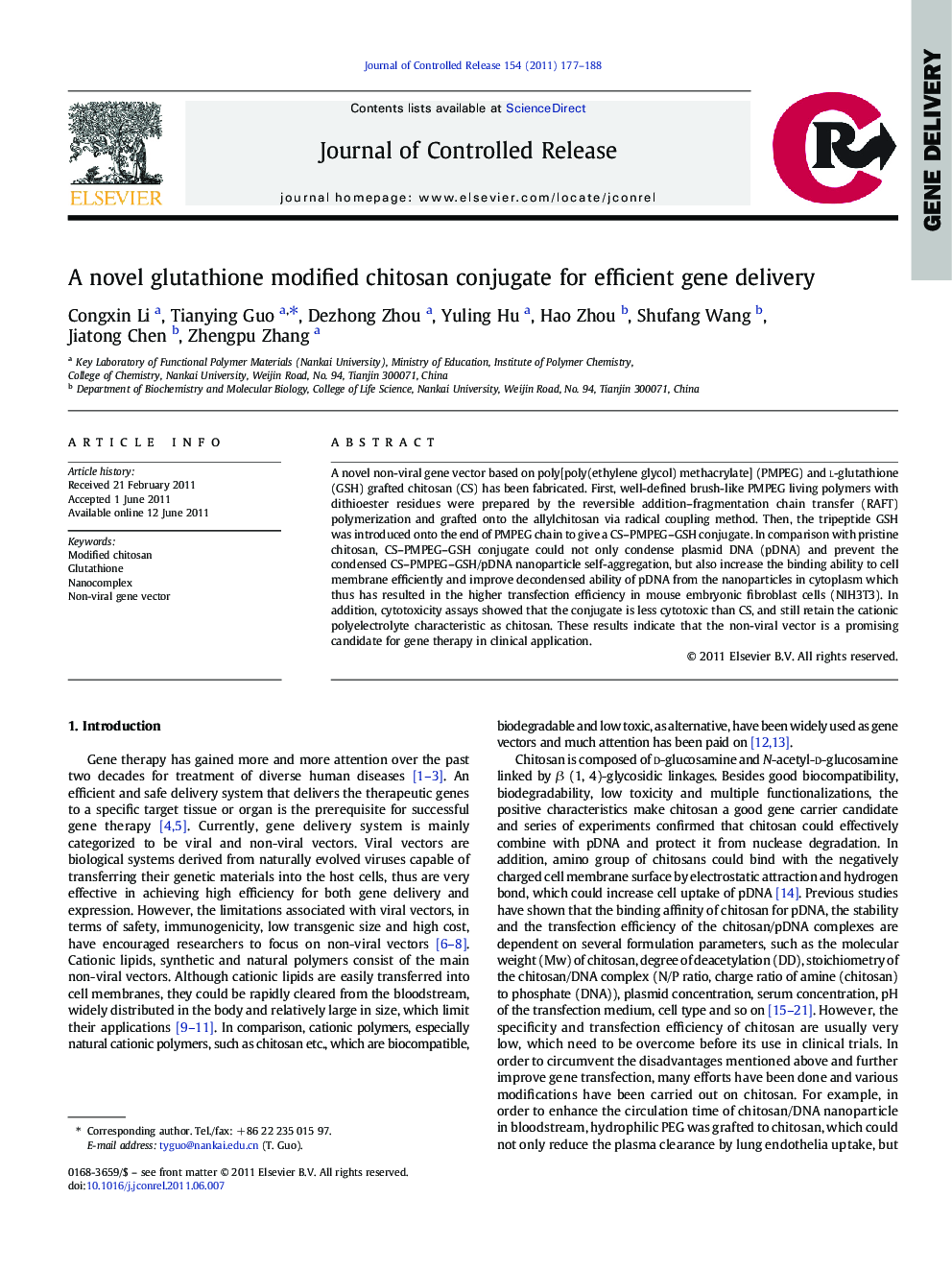| Article ID | Journal | Published Year | Pages | File Type |
|---|---|---|---|---|
| 1425003 | Journal of Controlled Release | 2011 | 12 Pages |
A novel non-viral gene vector based on poly[poly(ethylene glycol) methacrylate] (PMPEG) and l-glutathione (GSH) grafted chitosan (CS) has been fabricated. First, well-defined brush-like PMPEG living polymers with dithioester residues were prepared by the reversible addition–fragmentation chain transfer (RAFT) polymerization and grafted onto the allylchitosan via radical coupling method. Then, the tripeptide GSH was introduced onto the end of PMPEG chain to give a CS–PMPEG–GSH conjugate. In comparison with pristine chitosan, CS–PMPEG–GSH conjugate could not only condense plasmid DNA (pDNA) and prevent the condensed CS–PMPEG–GSH/pDNA nanoparticle self-aggregation, but also increase the binding ability to cell membrane efficiently and improve decondensed ability of pDNA from the nanoparticles in cytoplasm which thus has resulted in the higher transfection efficiency in mouse embryonic fibroblast cells (NIH3T3). In addition, cytotoxicity assays showed that the conjugate is less cytotoxic than CS, and still retain the cationic polyelectrolyte characteristic as chitosan. These results indicate that the non-viral vector is a promising candidate for gene therapy in clinical application.
Graphical abstractFigure optionsDownload full-size imageDownload as PowerPoint slide
